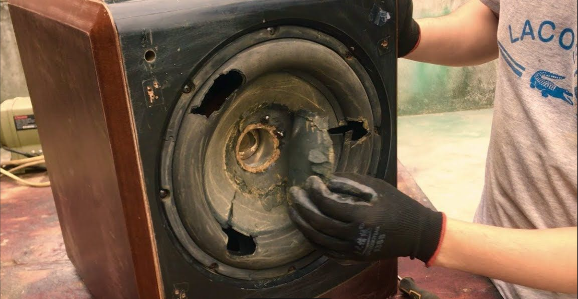When you are immersed in the world of music, if you suddenly find that the bass is almost gone, it is very likely that your subwoofer has malfunctioned. Subwoofer damage usually manifests in two ways: signal distortion and excessive power.

Here are methods to determine whether a subwoofer is damaged:
1. Disconnect the power source.
2. Place the speaker with its back facing down.
3. Remove the grille in front of the bass speaker (this process may vary depending on the type of speaker).
4. Place your fingers wide open on the bass speaker.
5. Gently press the bass speaker about one inch and then release.
If you hear scratching or scraping sounds, it usually indicates that the voice coil has deformed due to melting magnets and is rubbing against the magnets, suggesting that the speaker is indeed burned out. The bass speaker should be able to move without actually applying force. If it is reluctant to move or completely stuck, it indicates damage to the voice coil and suspension, and the speaker is likely broken.
How to deal with a burned-out subwoofer? Here are some methods:
1. Disconnect the subwoofer.if not disconnected promptly, a damaged subwoofer can cause excessive pressure, thereby damaging other components.
2. Check the voice coil. Connect it to a multimeter to see if it shows resistance. If it shows resistance, then the voice coil is fine; if there’s no movement, it means the coil is damaged.
3. Check the subwoofer cone. We have discussed this issue before, but now it’s time to examine your speaker cone. Try checking through all the methods discussed above.
4. Disassemble the subwoofer. Depending on the extent of damage to the subwoofer, you will need to start disassembling it. Prepare a screwdriver and a butter knife. Carefully remove the screws and keep them in a safe place to avoid losing them. You will need to use a knife to remove the foam around the speaker. Slowly cut through the glue and take it out.
5. Clean. After removing the foam surround, take off the voice coil and cone. Gently retrieve them. Once done, use a tissue to clear any dust or debris that may have accumulated inside. Next, wipe the interior with some rubbing alcohol. Afterward, you can install a new voice coil using glue. Let the subwoofer sit for at least 24 hours so that the glue dries completely.
6. Reassemble the subwoofer. Use glue to put all parts (including the speaker cone) back in their original positions. Then, let the subwoofer sit for another 24 hours to allow the glue to dry completely.
7. Reassemble the speaker. Once the voice coil and speaker cone are installed, you can reassemble all other components. Additionally, reconnect all wires that had to be disconnected initially.
After completing these steps, you can play again. By now, you have repaired the subwoofer; connect it to a radio to enjoy high-quality audio playback!
conclution:
In short, you still need to protect your subwoofer to prevent damage to the subwoofer. I also hope that this article can teach you to determine whether your subwoofer is damaged and needs simple repairs. Finally, I wish you a good music experience.
